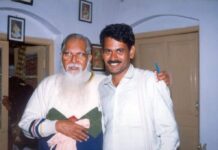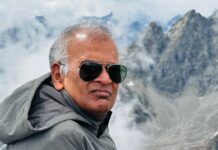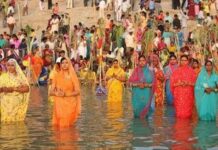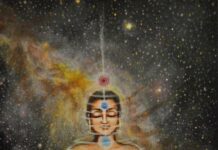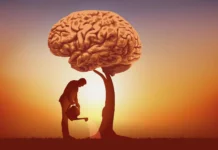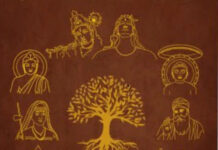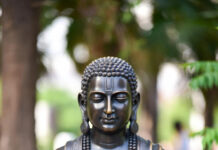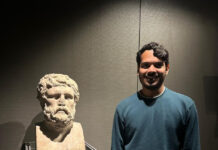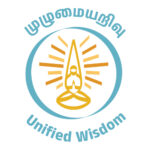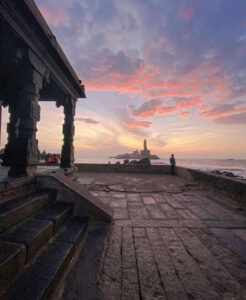
There is something we must understand in the realm of thought. Every thought belongs to the period in which it was conceived. We must understand the thought based on the way it originated and its logic. It should be continuously reviewed with new perspectives that come from time to time.
When European explorers came to India, they observed the caste system that existed here. Upon studying it, those who supported the caste system pointed the explorers to Hindu scriptures that emphasized the Varna system. The explorers of that time understood that the Hindu texts advocated the Varna system. They concluded that the Varna system had evolved into the caste system.
It has been two hundred years since then. Since that time, many fields of knowledge such as Sociology and Anthropology have emerged. Numerous new theories have been developed. The ability to gather and analyze information from all over the world collectively is prevalent now.
However, even today, many among us still think along the lines of those old European explorers’ opinions. I am not referring to the deliberate religious extremists or politicians, but rather to the general populace who speak on these matters.
The researcher D.D. Kosambi, who followed the Marxist method of analysis, has extensively studied the Indian caste system. Here, I provide an illustration that follows his perspective.
Let’s consider the social life of the indigenous tribes in India. The researcher Verrier Elwin has extensively studied this subject. Each tribal group has its own unique identity. They do not intermingle with other tribal groups. Many tribal groups do not even touch members of other tribes. They are very particular about maintaining their distinctiveness.
I have seen it myself. The Paliyan and Kurumba tribes of the Western Ghats will not eat food touched by the other. Researcher K. Panoor recorded that until twenty years ago, they would not even touch each other. Even today, in the Bargur hill regions of Erode, the Soliga and other tribes do not share water with each other. There are no common wells. While the government speaks of eradicating untouchability in the villages, it cannot address these issues among the tribal communities.
The tribal communities have purification rituals as well. If someone from another tribe touches them or sits in their place, they purify it by sprinkling a mixture of cow dung and water. Even today, tribal communities in Tamil Nadu practice this.
No one could venture into the hill forests until motor vehicles were invented. There is no connection between the tribal communities and others. Their language is different. Even today in India, there are tribal communities who do not wear clothes in public. I have seen it myself. How did these divisions, untouchability, and purification rituals come about among them? Was it dictated by Manu’s law? Did the Brahmins dictate it?
Kosambi suggests that understanding India’s social history is really very straightforward. There are tribal communities in India who lead a lifestyle without clothing. They live the same way people lived fifty thousand years ago. In Mumbai, some have ultra-modern lifestyles. They are living in the 21st century. Between these two extremes, there are numerous intermediate stages in the way people live. If you arrange them in order, you can understand the social evolution spanning fifty thousand years.
By examining these factors, we can easily determine the origins of the caste system. Within tribal communities, there are numerous groups. They are referred to as tribes / ethnic groups. There is no caste in North Eastern states, only ethnic groups. Fierce conflicts between these ethnic groups continue to this day. If the government gets a little weak, they kill each other.
This extermination has been happening for thousands of years. Therefore, for a tribal group, increasing its numbers was the only way to ensure survival. Hence, in ancient times, tribal communities would welcome and assimilate others into their fold. They would capture women from other tribes. They would engage in wars with smaller tribes and either win them over or form marital alliances.
By consolidating their ethnical identity and assimilating many people into their community, they grew in numbers. They identified themselves as castes. Those who did not grow in this manner were marginalized and eventually dwindled. The only survivors were those who escaped and lived in the jungles. They remain as tribals to this day.
Tribal communities merged and castes were formed and assigned over time. As we see, in India, each caste has its own unique culture, customs and traditions. Rituals and practices are unique to each. Deities are distinct. Even the facial features are unique among different ethnic groups. Food habits are unique and distinct too.
Indians are ridiculous in a way. Everyone criticizes the caste system. They say they have been oppressed by the caste system. But no one will give up his/her own caste. Pride of their own caste never diminishes.
If the caste was given to you by a Brahmin in conspiracy, why are you keeping it? If it was given by Manu Smriti, why can’t it be thrown away? It seems impossible. Because caste seems to be your identity, isn’t it? Isn’t it true and obvious that even the lower castes don’t leave their caste identities?
Therefore, people here oppose not the caste itself, but the hierarchical system / stratification within the caste. This involves the notion of upper caste and lower caste. Each caste strives to distance itself from the lower caste and aspires to be above them. They oppose the caste above them too. Brahmins also engage in this. They too have a hierarchy within themselves. We can even witness discrimination within their community.
How did this hierarchy come about? We can also see it in the northeast. There, violent ethnic groups with numerical strength among tribes are considered superior. Minor ethnic groups are inferior. Smaller ethnic groups should subsume and co-exist with larger ethnic groups. Otherwise there is direct violence. This is ongoing. It only becomes news when many people die. If this system continues for a thousand years, it will become a caste system.
We know that each caste has many groups within it. Each one has its own unique identity. Even now, many castes do not intermarry with another group within the same caste. One group considers another group inferior. There are fifty or sixty groups here within each caste, aren’t they?
Think about this. Was the Brahmin the creator of all these sects and subsects? Did a single book called Manu Smriti create thousands of such sects all over India? Could that happen? Are they some kind of Gods to divide crores of people into castes?
Are our ancestors so foolish to separate into such divisions upon their advice? I wouldn’t say that about my ancestors.
Small ethnic groups merged to become larger ethnic groups. Ethnic groups became castes. Castes also merged with time. It was only in 1910 when the whites took the first caste-wise census that similar castes came together and adopted common names. However, individual identities still persist.
That means people are not divided into castes. They were integrated into castes. That is how Indian society was formed. This is ongoing. In the last thirty years, we can see many similar castes merging before our eyes. Castes will continue to merge in times to come.
Today, caste has an economic foundation. Caste identity also exists as an individual identity in our society. If these two disappear over time, caste system will vanish. Even those who have studied a bit of Marxism can tell you this. Caste is the superstructure. Economics is the foundation. If the foundation changes, only then will the superstructure change.
I am not a supporter of the caste system. I believe that caste identity is unnecessary in today’s life, and I have consciously strayed away from it in my personal life. However, I will acknowledge its existence through history. It emerged from the tribal society of ancient India and was not constructed by anyone. It emerged naturally from society and not from religion.
Jeyamohan
Translated by Geethaa Senthilkumar

